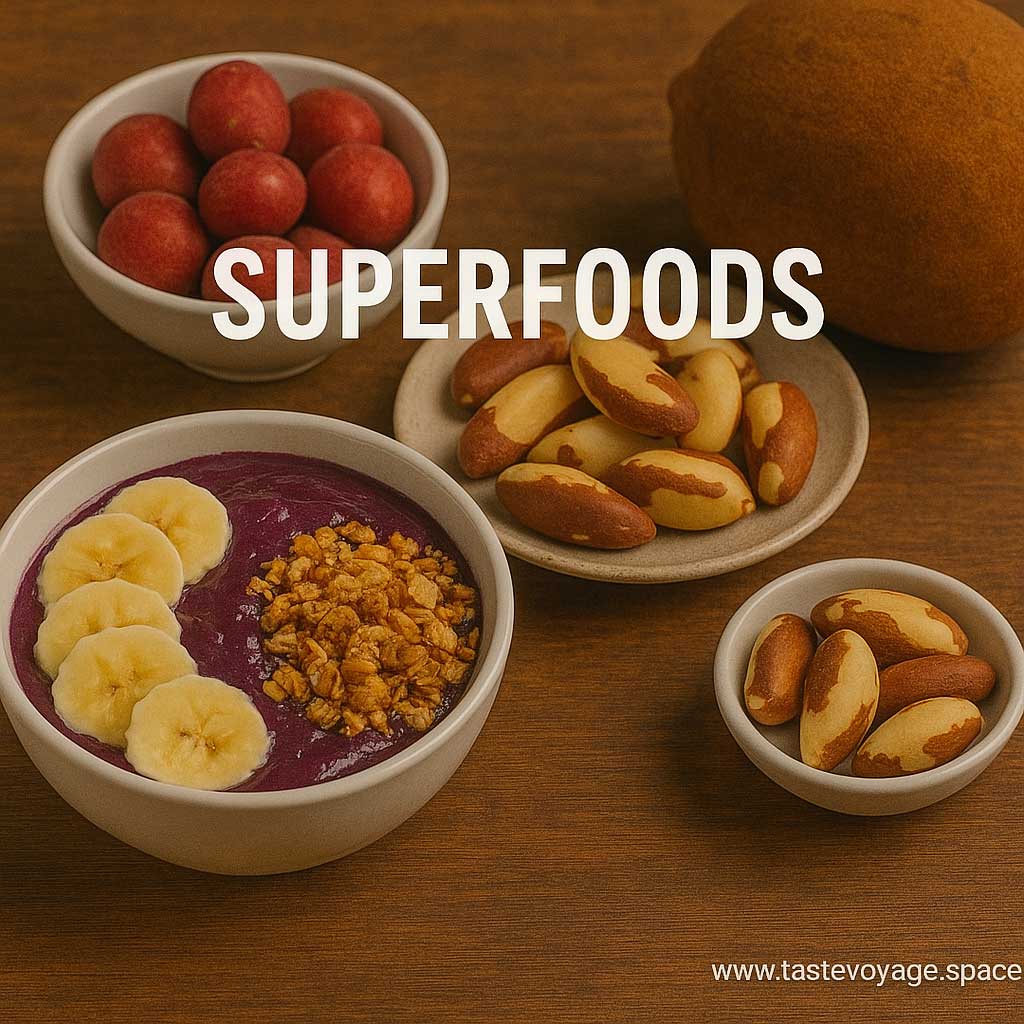Delicious Cashew Fruit Recipe | Brazilian Superfood Delight
Travel the World Through Food >> Brazilian Cuisine>>Superfoods>> Delicious Cashew Fruit Recipe | Brazilian Superfood Delight
Delicious Cashew Fruit Recipe | Brazilian Superfood Delight
Cashew Fruit Recipe: Brazilian Superfood
An Introduction to the Cashew Fruit
The cashew fruit, often called the “cashew apple,” is a vibrant and unique treasure from Brazil’s diverse landscape. Bright yellow to red in color, the fruit is not just visually striking but also culturally significant. Native to Brazil, the cashew apple has been appreciated for centuries for its sweet, tangy flavor and its versatility. It embodies the rich culinary heritage of the region and showcases the ingenuity of local food traditions.
Cultural Significance in Brazil
In Brazilian culture, the cashew fruit holds a cherished place. It is more than just a food item; it represents local innovation and sustainable living. Historically, communities have harnessed every part of the fruit, emphasizing a deep respect for nature’s bounty. The cashew apple is often used in local festivals and traditional gatherings, symbolizing abundance and community spirit.
The fruit’s importance extends beyond eating; it influences local art, music, and craft. The vibrant colors of the cashew apple inspire local artisans, and its flavors evoke memories of family gatherings and celebrations. Today, the fruit continues to be celebrated as a symbol of Brazil’s rich natural resources and culinary creativity.
Culinary Significance and Uses
The cashew fruit is celebrated for its bright, refreshing flavor—combining sweetness with a hint of acidity. Its culinary uses are diverse, reflecting its importance in local cuisine. Freshly picked, the fruit is enjoyed on its own as a juicy snack, appreciated for its invigorating taste.
Beyond eating raw, the cashew apple is used to produce a variety of traditional beverages, including refreshing juices and tangy fermented drinks. The fruit’s pulp is also integrated into jams, jellies, and desserts, offering a unique taste experience that highlights Brazil’s tropical flavors.
The nut itself, often more widely known, is processed separately, but the fruit’s culinary significance places it in the spotlight as a versatile ingredient. Its vibrant flavors and textures have made it a staple in regional recipes, inspiring chefs and home cooks alike.
Celebrating the Superfood
In recent years, the cashew fruit has gained recognition as a “superfood.” Its high vitamin C content and antioxidants make it a healthy addition to modern diets. Nutritionally rich, it supports overall well-being and energizes those who incorporate it into their meals.
As a superfood, the cashew fruit exemplifies Brazil’s rich biodiversity and its importance in promoting health and sustainability. This appreciation encourages more people worldwide to explore and cherish this remarkable fruit.
Conclusion
The cashew fruit is a true emblem of Brazil’s vibrant food culture. Its role as a symbol of abundance, its diverse culinary uses, and its status as a superfood highlight its significance. Whether enjoyed fresh, as part of Traditional Recipes, or embraced for its health benefits, the cashew fruit invites us to explore the rich flavors and cultural depth of Brazil. Celebrate this extraordinary fruit, and discover how it continues to inspire and connect communities through food.
